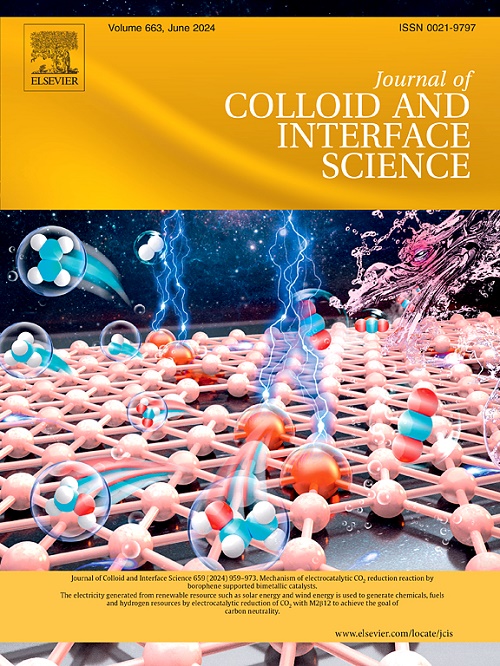调节循环醚电解质的位阻可以实现高压锂金属电池。
IF 9.7
1区 化学
Q1 CHEMISTRY, PHYSICAL
引用次数: 0
摘要
醚基电解质因其对锂金属阳极(LMA)的高稳定性而闻名,但它们通常表现出较低的高压稳定性。醚基溶剂分子的结构优化已被证明可有效拓宽这些电解质的电化学窗口,但环醚的优化规则仍不清楚。在此,我们研究了甲基取代位置对常用环醚--1,3-二氧戊环(DOL)分子特性的影响。结果表明,甲基的引入能有效抑制 DOL 的开环聚合。此外,与 2-甲基-1,3-二氧戊环(2-Me DOL)相比,4-甲基-1,3-二氧戊环(4-Me DOL)具有更大的立体阻碍,其溶解能力较弱,有利于形成富含阴离子的内溶鞘层和阴离子衍生界面。使用 LiFSI/4-Me DOL 的锂镍 0.5Co0.2Mn0.3O2 (NCM523) 电池可稳定循环 300 次以上。这项研究揭示了一种新的溶剂分子设计原理。本文章由计算机程序翻译,如有差异,请以英文原文为准。

Tuning steric hindrance of cyclic ether electrolytes enables high-voltage lithium metal batteries
Ether-based electrolytes are known for their high stability with lithium metal anodes (LMAs), but they often exhibit poor high-voltage stability. Structural optimization of ether-based solvent molecules has been proven to effectively broaden the electrochemical window of these electrolytes, yet the optimization rules within cyclic ethers remain unclear. Herein, we investigate the impact of methyl substitution positions on the molecular properties of 1,3-dioxolane (DOL), a commonly used cyclic ether. The results show that the introduction of methyl groups can effectively inhibit the ring-opening polymerization of DOL. Besides, 4-methyl-1,3-dioxolane (4-Me DOL), with larger steric hindrance compared to 2-methyl-1,3-dioxolane (2-Me DOL), exhibits weaker solvation ability, favoring the formation of anion-rich inner solvation sheath layers and anion-derived interfaces. Even at conventional concentrations, 1 M LiFSI in 4-Me DOL (LiFSI/4-Me DOL) electrolyte demonstrates good LMA stability and an expanded electrochemical window up to 4.6 V. The Li-LiNi0.5Co0.2Mn0.3O2 (NCM523) cell using LiFSI/4-Me DOL could stably cycle over 300 times. This work reveals a new design principle for solvent molecules.
求助全文
通过发布文献求助,成功后即可免费获取论文全文。
去求助
来源期刊
CiteScore
16.10
自引率
7.10%
发文量
2568
审稿时长
2 months
期刊介绍:
The Journal of Colloid and Interface Science publishes original research findings on the fundamental principles of colloid and interface science, as well as innovative applications in various fields. The criteria for publication include impact, quality, novelty, and originality.
Emphasis:
The journal emphasizes fundamental scientific innovation within the following categories:
A.Colloidal Materials and Nanomaterials
B.Soft Colloidal and Self-Assembly Systems
C.Adsorption, Catalysis, and Electrochemistry
D.Interfacial Processes, Capillarity, and Wetting
E.Biomaterials and Nanomedicine
F.Energy Conversion and Storage, and Environmental Technologies

 求助内容:
求助内容: 应助结果提醒方式:
应助结果提醒方式:


